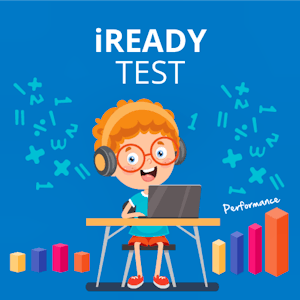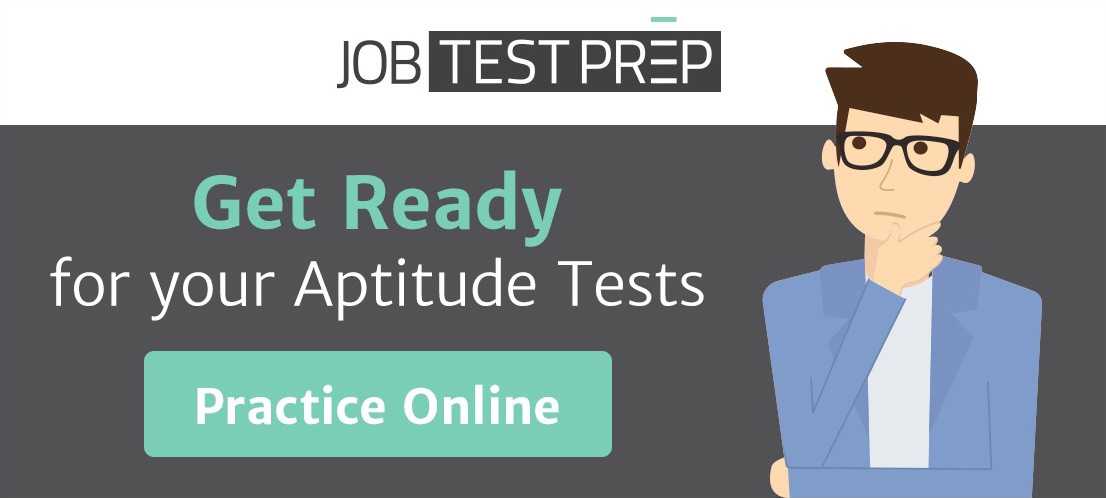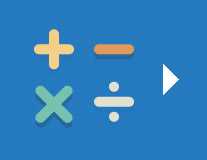iReady Diagnostic Scores – 2025 Guide
Updated November 3, 2024

- What Are the iReady Diagnostic Scores?
- The Three Types of Scores
empty
empty
empty
empty
- How Is the Score Displayed?
empty
empty
empty
- Information about the iReady Diagnostic Scores 2025 – iReady Diagnostic Scores by Grade
empty
empty
empty
empty
empty
empty
empty
empty
empty
- Frequently Asked Questions
- Final Thoughts

An iReady level score of 3.00 or over means the student is working at or above the level required to meet the standard for their grade.
The level score is calculated in line with expectations when the test was administered, not in comparison to the expected score by the end of the school year.
What Are the iReady Diagnostic Scores?
The iReady diagnostic test is administered to US school children in grades K to eight.
The purpose of this school assessment test is to help parents and teachers check a student’s academic process at the beginning, middle and end of each school year.
It is a computer-adaptive test, which means the questions are adjusted to become more difficult if a series of correct answers is given.
As a result, the test is designed to challenge the skill level of the student sitting the test, as well as assess their strengths and opportunities for growth.
If a student answers a few questions in a row incorrectly, the questions that follow will be easier.
Many people find i-Ready Diagnostic scores difficult to interpret.
As a child progresses through each academic year and moves up the year groups, their expected score will change.
The average score increases year on year, too.
In this article, you can learn more about the different types of iReady diagnostic scores, how these scores are displayed, and how to interpret them to better understand a student’s iReady test performance.
The Three Types of Scores
iReady diagnostic tests offer a full picture of a student’s performance according to their grade level and national norms.
The iReady diagnostic test score report features three different types of scores. These are:
Scale Score
The overall scale score falls between 100 and 800.
The student’s average score is based on the subcategories within the test category. It indicates which skills they have mastered and which skills they still need to work on.
Norms table – What Is a Good iReady Diagnostic Score?
This can be used to check a student’s progress against others in the norm group. For example, if your child’s score is in the 70th percentile, that means they performed as well or better than 70% of other students in the same school grade.
If their score falls into the 80th percentile, they performed as well or better than 80% of other students in the same school grade.
When looking at the norms table, you will notice that there is a range of scores for each grade. This is known as the ‘typical’ range.
If your child’s score sits inside this range, they are performing close to the average level for their age group. If their score is above the typical range, they are performing better than average.
If their score is below the typical range, they are performing below the average level for their age group.
Level Score
This is the overall test score for each topic assessed during the test. This score is converted into a number between one and 4.99.
A score of 3.00 or over indicates that the child is meeting academic expectations for their current level of study and year group.
A score of four or above shows that they are exceeding expectations for their grade level.
A score between two and 2.99 shows they are approaching expected levels.
A score between one and 1.99 is below the level of expectation for their grade.
Lexile Score
This denotes the child’s reading level. It can be used to establish a student’s independent reading ability.
As with any school test, your child’s iReady diagnostic test results only offer a snapshot of their academic performance.
iReady results should be considered alongside other factors, such as their behaviour in school, overall strengths and other interests.
How Is the Score Displayed?
Several key pieces of information are included in your child’s iReady Diagnostic test results. These include:
Year to Date Growth
This shows how much they have progressed (or regressed) since taking their last iReady test.
Placement By Domain
This offers a good gauge of your child’s overall performance. It includes a rating for each sub-section of the test and shows their grade level performance earlier in the year and their grade level performance now.
Overall Diagnostic Growth
This offers an at-a-glance insight into how your child is performing at school. It shows whether they are performing at grade level, under grade level or over grade level.
The bar chart on the left-hand side shows their performance on the previous test.
The bar chart on the right-hand side shows their performance on the most recent test.
It also shows whether your child has met the goal set by iReady.
The overall goal is that the second bar should be going up.
If it has dropped, this may be cause for concern, but remember, the iReady is just one test. You should always speak to your child’s teacher if you are worried.
The iReady diagnostic test score report includes a score presented as a three-digit number. This relates to their overall ability.
Technically, there is no lowest score, but the lowest score for the bottom 1% of students in kindergarten is 298.
The highest possible score on the test is over 704. However, this is only achieved by students in the 99th percentile during the spring semester of 8th grade.
Your child’s iReady test results can be compared with their previous test results as a measure of their overall academic progress.

If you want 12-month access to all the practice resources for this test, our partner TestPrep-Online.com offers a Family Membership.
Family Membership gives you access to all the TestPrep-Online resources for the next 12 months. You will also get two separate accounts, which can be very helpful if you have two children preparing for their tests.
Information about the iReady Diagnostic Scores 2025 – iReady Diagnostic Scores by Grade
The tables below show key scores for each grade group during the fall semester.
This information can be used to establish where your child’s performance sits in relation to others within their grade group.
For example, if your kindergarten-age child scores 358 for their iReady math scores and 360 for their iReady reading scores, their performance sits inside the 70 to 79 percentile.
This means they performed at the same level or better than 70% to 79% of other students in their peer group.
Kindergarten Grade (Fall) (Including iReady Math Diagnostic Scores 2025)
| Percentile | Reading | Math |
|---|---|---|
| 20–29 | 321–329 | 322–328 |
| 50–59 | 341–347 | 342–347 |
| 70–79 | 357–366 | 353–360 |
| 90–99 | 384–422+ | 371–392+ |
| Percentile | Reading | Math |
|---|---|---|
| 20–29 | 366–378 | 353–362 |
| 50–59 | 403–409 | 376–381 |
| 70–79 | 417–427 | 388–393 |
| 90–99 | 456–508+ | 404–431+ |
| Percentile | Reading | Math |
|---|---|---|
| 20–29 | 413–425 | 382–390 |
| 50–59 | 460–473 | 402–408 |
| 70–79 | 489–503 | 414–422 |
| 90–99 | 524–561+ | 435–458+ |
| Percentile | Reading | Math |
|---|---|---|
| 20–29 | 451–471 | 404–412 |
| 50–59 | 502–515 | 428–434 |
| 70–79 | 528–540 | 441–447 |
| 90–99 | 558–595+ | 456–480+ |
| Percentile | Reading | Math |
|---|---|---|
| 20–29 | 485–503 | 426–436 |
| 50–59 | 533–543 | 452–459 |
| 70–79 | 557–569 | 466–473 |
| 90–99 | 588–627+ | 484–508+ |
| Percentile | Reading | Math |
|---|---|---|
| 20–29 | 513–529 | 444–454 |
| 50–59 | 558–568 | 470–477 |
| 70–79 | 582–594 | 484–491 |
| 90–99 | 616–648+ | 503–524+ |
| Percentile | Reading | Math |
|---|---|---|
| 20–29 | 524–542 | 452–463 |
| 50–59 | 573–584 | 483–489 |
| 70–79 | 600–614 | 497–504 |
| 90–99 | 632–669+ | 515–540 |
| Percentile | Reading | Math |
|---|---|---|
| 20–29 | 540–559 | 463–475 |
| 50–59 | 590–604 | 493–500 |
| 70–79 | 619–630 | 508–514 |
| 90–99 | 648–687+ | 530–558+ |
| Percentile | Reading | Math |
|---|---|---|
| 20–29 | 555–573 | 471–483 |
| 50–59 | 607–619 | 501–509 |
| 70–79 | 632–641 | 518–527 |
| 90–99 | 663–696+ | 545–572+ |
It is important to note that students taking an iReady diagnostic test are not in competition with their peers. However, test results do tend to follow a bell curve, adjusting as time progresses.
In most cases, the score that a student achieves at the beginning of the academic year should be lower than the score they achieve by the end.
If a student does not improve their score by the end of the school year, this suggests they have made limited progress in their learning journey.
However, the actual percentage increase in scores from the start to the end of the academic year is unlikely to be major.
For example, the 50th percentile for kindergarten changes from 342 to 378.
When taking the iReady diagnostic test, students are not in competition with their peers. However, test results do follow a bell curve.
Test scores for the iReady diagnostic test also adjust as time progresses.
The scores that a student achieves at the start of the academic year should be lower than they are at the end.
If a student does not improve their score throughout the course of the school year, this suggests they have made little progress in their learning journey.
However, an increase in scores is unlikely to be very high from the start to the end of the school year. For example, the minimum threshold for the 50th percentile for the kindergarten math test changes from 342 in the fall to 378 in the spring.
In eighth grade, the minimum threshold for the 50th percentile for the math test changes from 501 in the fall to 512 in the spring.
Frequently Asked Questions
There are a few things to consider when thinking about a good iReady diagnostic score.
If you are looking at the level score, three is generally considered to be a good score. This indicates that your child is meeting academic expectations of their level of study and age group.
A level score of four or over shows they are exceeding expectations.
You can use the percentile score to see how well your child is performing against their peers.
For example, if their score is in the 60th percentile, they are performing at the same level or better than 60% of other children in their peer group.
You can find the iReady diagnostic norm scores for Grades K to eight on the Curriculum Associates website.
You can read your child’s overall iReady diagnostic norm score by checking where it falls on the diagnostic norm scores table on the Curriculum Associates website. This will give you an indication of your child’s performance compared to others within their peer group.
iReady test scores offer an indication of your child’s performance and learning up to the date of the test.
Your child’s iReady diagnostic score should be considered alongside other indicators such as their behaviour at school, interests and overall strengths.
Helping your child to prepare for the iReady test is the best way to ensure they improve their iReady score.
You can do this by encouraging them to sit practice assessments, playing educational learning games together and providing them with a variety of different reading materials.
The iReady diagnostic scores are designed to help teachers and parents see where a student is performing against their peers, which skills they have mastered, and which skills require improvement.
iReady diagnostic scores should be used to inform a student’s individual learning journey for the next semester.
Ready scores are an important tool for parents and teachers.
Your child’s results offer an insight into their educational needs, learning style and overall progress to date.
The iReady is not a pass-or-fail test. It is important not to put too much pressure on your child as this may hinder their performance.
The answer to this question depends on your child’s grade and which score you are looking at. For example, a level score of three or over tells you that your child is working at or above the level expected for their grade group.
If you are looking at your child’s scale score, you will need to consult the diagnostic score tables for your child’s grade group.
Generally, a score in the 59th percentile or over is considered to be a good score for iReady math diagnostic.
Final Thoughts
If you are unfamiliar with the iReady diagnostic test, the score report can be difficult to read at first.
Using the information in this article should help you to gain a better understanding of the information within your child’s iReady diagnostic test results and how this can be analysed to see how your child is progressing at school.
If you want to help your child improve their iReady test score, you can find information on practice tests for both the math and reading assessments at TestPrep-Online.














